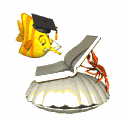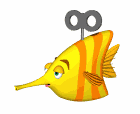|
|
|
|
||||||||||||||||||||||||||
|
Numeracy problems to solve for Key Stage 1, 2 and 3
We are all familiar with tiling. We find it in the bathroom, kitchen, fire places, on the floors. The Romans called the small tiles they used for pavements and walls 'tessellations'. Repeating designs made with tiles that fit together without any gaps are called tessellations. This tile of sam can be used to make a tessellation like the one below. A 'Sam' tessellation
Task A Make your own Sam tile like this
Click here for the squared paper You can colour your 'Sam' tiles as you wish and make your
own tessellation. Task B Try making a fish tile and using it to make a fish tessellation. Make your tile from a square.
An extra challenge
Crop circles are flattened or swirled areas which are found in fields where wheat, barley or other cereal crop is growing. How are they made? Superior alien technology? Or geometry that would have been easy for the Ancient Egyptians? The fascination of crop circles is that large geometric designs appear overnight as if no human has had a hand in them but... The designs are usually made by hoaxers - people who enjoy creating apparently mysterious happenings. However, some of the simpler crop circles may be caused by unusual weather conditions.
The crop circle in the drawing above appeared in Wiltshire, as if by magic, in August 2000. The inside design is a repeat of the outside one and only the circular outline are flattened in a clockwise direction. Although it looks complicated, using a length of rope and flattening boards. How the crop circle could be made by two hoaxers with a length of rope: Task
|
|
||||||||||||||||||||||||||
|
|
|
|||||||||||||||||||||||||||








